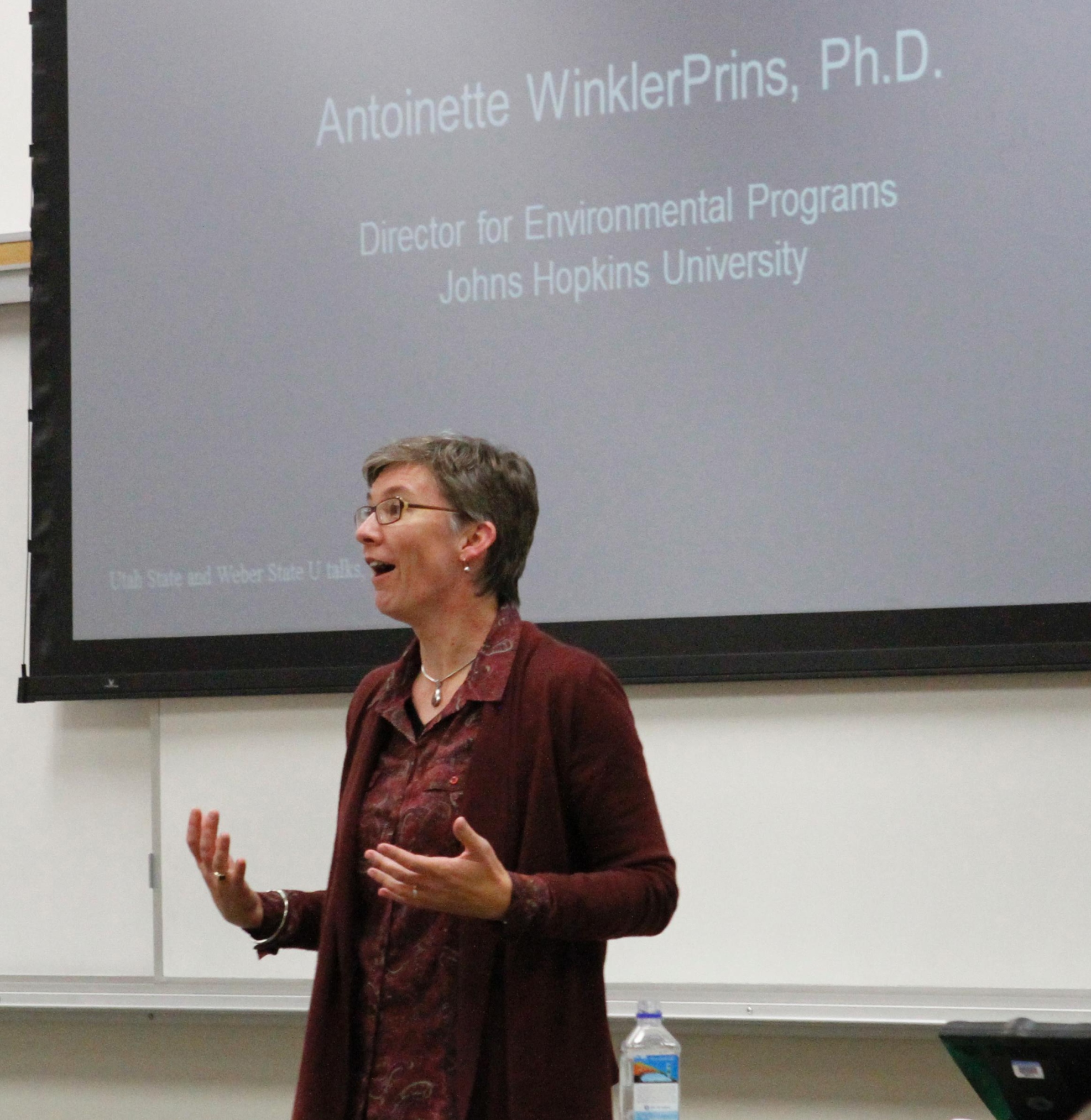Soil in Amazon rainforest altered by ancient civilizations
Patches of Amazonian soil prove to be exceptionally fertile thanks to help from ancient civilizations.
Dr. Antoinette WinklerPrins, the director for environmental programs from Johns Hopkins University, came to USU to speak to students, professors and Amazon enthusiasts about some exciting findings in the Amazon basin.
WinklerPrins talked about an increasing amount of evidence showing how extensive ancient civilizations altered the Amazonian rainforests, both intentionally and unintentionally.
Amazonian “Dark Earths” are being discovered all across the Amazon basin. The area consists of ancient compost, ceramics and most importantly, an aromatic carbon or charcoal. The soil has maintained its nutrients and fertility, unlike most of the soil in the region, which has much of its fertility weathered away, WinklerPrins said.
WinklerPrins described how the civilizations that inhabited the region hundreds to thousands of years ago used a technique of slash and char. A slow, cool, low-oxygen smolder was used to dispose of waste and clear out areas around settlements.
The result of the smolder, the aromatic carbon or charcoal, is key in helping the soil maintain its fertility. This makes it resistant to weathering and stays in the landscape for long periods of time, WinklerPrins said.
Taylor DeVilbiss, a student majoring in watershed science, attended the lecture.
“I find it interesting that the discovery of how to create this great soil was somewhat of an accident,” DeVilbiss said. “All the great irrigating cultures have salinated their soils while these civilizations improved their soils.”
The smoldering technique still persists somewhat today in the backyards of houses in the region, WinklerPrins said. People sweep up the organic debris from their yard and smolder it down to create the charcoal, which they use to fertilize their plants.
Helping the fertility of the soil wasn’t the only way these civilizations modified their environment. WinklerPrins said an estimated 12 percent of the forest is considered a cultural forest, where it is composed of plant and animal species that have been manipulated by people.
By discarding seeds along common trails and around settlements, ancient civilizations enriched the forests with beneficial plants. Even the new wonder fruit acai has benefited from this incidental manipulation and is considered a semi-domesticated plant.
“It’s always nice to hear about ancient people who lived sustainably in their environments,” said Julie Koldewyn, a graduate student studying the human dimension of ecosystems science and management.
After the lecture there was a question-and-answer session where a man in the audience asked why these “Dark Earths” weren’t found elsewhere. WinklerPrins said there was some interesting research in Africa but there haven’t been any discoveries of an equivalent soil yet.
-zack.oldroyd@aggiemail.usu.edu

